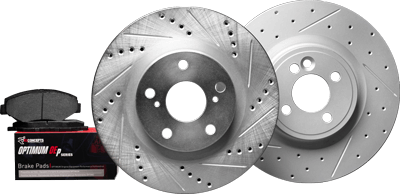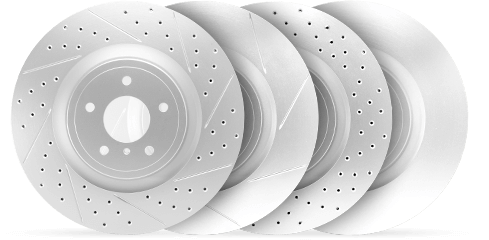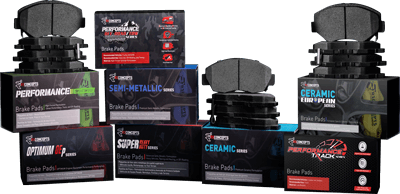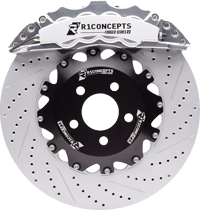Considering an upgrade to your vehicle’s brake system and wondering, “are stainless steel brake lines worth it?” These lines are often championed for their increased durability and improved braking response, potentially giving you an edge on the road or track. This article cuts through the noise to provide a straightforward look at the benefits and trade-offs, helping you make an informed decision based on actual performance gains, longevity, and your unique driving demands. Strap in as we navigate the intricacies of stainless steel over traditional rubber brake lines, without the fluff and sales pitch, while answering the question: are stainless steel brake lines worth it?
Key Takeaways
Stainless steel brake lines enhance braking efficiency by resisting expansion under pressure, providing consistent pressure transmission, resulting in a more responsive braking system compared to standard rubber hoses.
Constructed with a Teflon or PTFE inner core and a braided stainless steel sleeve, these brake lines are designed for durability and can handle high temperatures, making them a versatile option for various driving conditions and suitable for performance and off-road vehicles.
While stainless steel brake lines have a higher initial investment compared to rubber hoses, their extended lifespan and improved braking performance can offer long-term benefits, but the overall value depends on individual driving needs and conditions.
Are Stainless Steel Brake Lines Worth It
Often hailed as the premier upgrade for braking systems, stainless steel brake lines are designed to boost the longevity and effectiveness of these systems by curtailing hose expansion. Their consistent performance, delivered by eliminating the expansion that occurs in stock rubber lines, makes them a popular choice among car enthusiasts.
On the track, stainless steel brake lines can enhance braking performance by maintaining a firmer pedal feel and offering better modulation due to their heat resistance. But how exactly do they achieve this? And how do they compare to their rubber counterparts? Let’s delve deeper to find out.
The Role of Brake Lines in Braking Efficiency
Your vehicle’s braking system heavily relies on brake lines. They transmit brake fluid pressure from the master cylinder to the brake calipers, which then clamp down to slow or stop the vehicle. This process is a symphony of mechanical precision that ensures your vehicle responds when you hit the brake pedal.
This process significantly involves stainless steel brake lines. Their key advantage lies in their ability to resist expansion under pressure. This ensures consistent pressure transmission, leading to a more responsive braking system. This makes them a popular choice for performance and off-road drivers who demand optimal braking performance.
Stainless Steel vs. Rubber: A Comparison of Durability
When it comes to durability, stainless steel brake lines have a distinct advantage over rubber hose. Rubber hoses can fail over time and with repeated use due to weakening, ballooning, or stretching when pressure is applied.
Stainless steel brake lines, on the other hand, offer several advantages over OEM rubber brake hose:
They resist corrosion and endure reduced expansion, resulting in superior durability.
They maintain their sensitivity without stretching, ensuring a more responsive braking system.
The average lifespan of rubber brake lines is typically about six years, during which they can stretch and become less effective.
By choosing stainless steel brake lines, you can enjoy a longer-lasting and more reliable braking system.
This singular fact underscores the worthiness of stainless steel brake lines as an investment.
Impact on Pedal Feel
One of the most noticeable benefits of upgrading to stainless steel brake lines is the improved pedal feel. The installation of these lines results in a firmer pedal response, with less travel required to achieve the same braking power.
The benefits of stainless steel brake lines include:
Non-expansive nature, ensuring a more direct transfer of hydraulic pressure
Resistance to ballooning, resulting in better pedal feel
More consistent braking
Improved pedal firmness
Reduction in the ‘mushy’ brake feeling
These benefits have been confirmed by various drivers, including those of BMW E39 and E30 vehicles, as well as everyday and performance-focused drivers.
The Construction of Stainless Steel Brake Lines
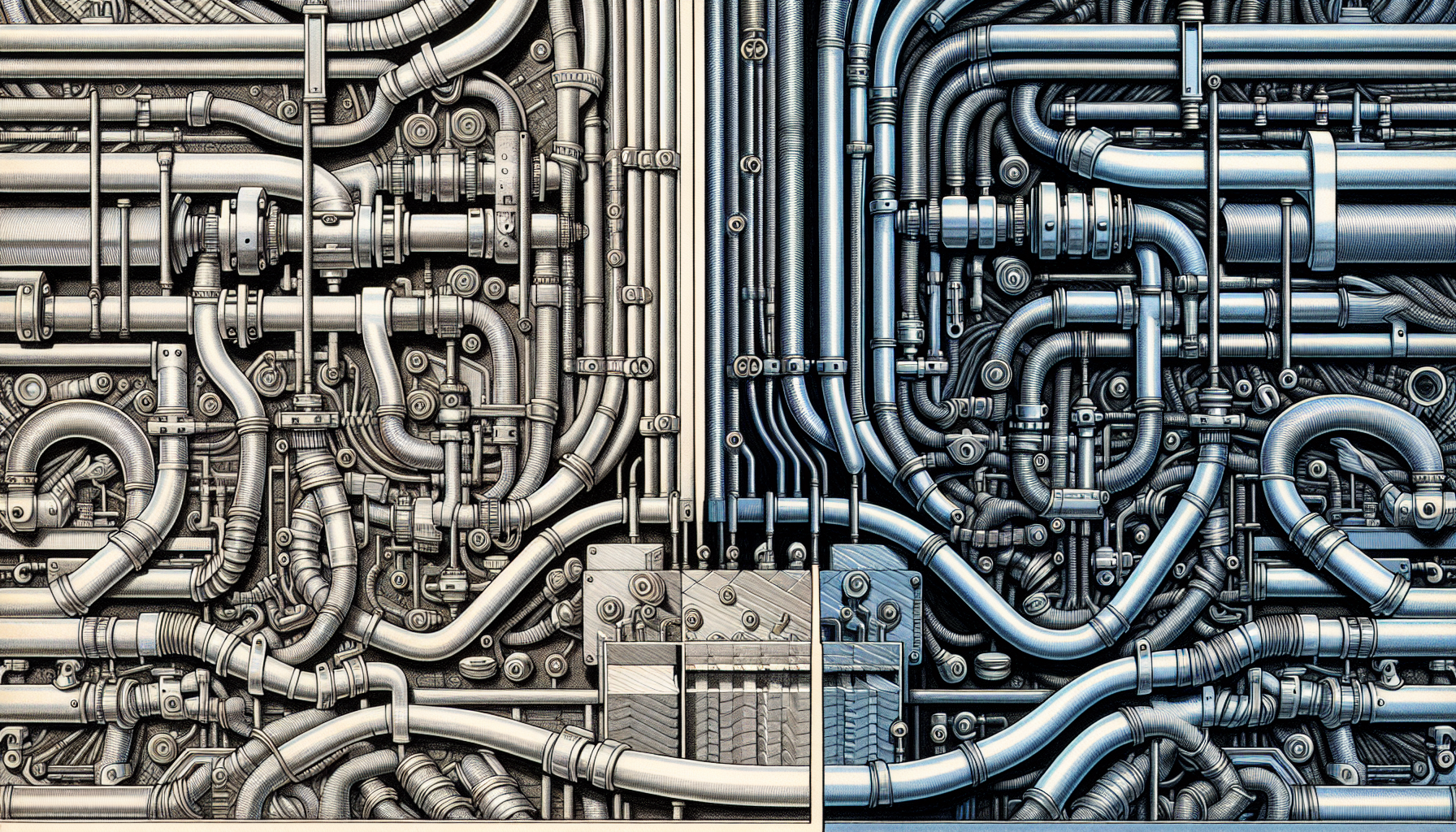
Having underscored the benefits of stainless steel brake lines, it’s time to explore their construction. These brake lines are created using a method where the material is drawn over a die to extrude the tube form, ensuring exceptional resistance to rust and corrosion.
At the heart of their design is a Teflon liner encased in a braided stainless steel sleeve. This combination of materials delivers a unique blend of durability and reliable braking performance. But what are the practical implications? Let’s dissect this further.
Anatomy of a Stainless Steel Brake Line
The anatomy of a stainless steel brake line is nothing short of fascinating. At its core is a Teflon or PTFE tube that offers a smooth path for brake fluid and resists high pressure, essential for maintaining consistent fluid delivery. For optimal performance, it is important to use specified high-quality materials such as DuPont virgin grade PTFE for the inner core when installing these lines.
This Teflon or PTFE inner hose is encased in a braided stainless steel wire to provide rigidity and resist expansion caused by internal pressure from braking, ensuring the brake line maintains its shape. This stainless steel braided outer layer serves to add strength to the brake line and prevents any undesirable expansion of the line under the high pressure of the braking system. However, it’s worth noting that there are concerns about the longevity of these brake lines, particularly the potential of the Teflon tube being eroded by road debris that could get caught in the braided external sheath.
Pressure Handling Capabilities
Stainless steel brake lines, also known as ss brake lines, are engineered to reduce the expansion that typically occurs when under pressure, which helps to maintain consistent brake pressure to the calipers. This is a significant advantage over OEM rubber hoses, which exhibit expansion when subject to hydraulic pressure, potentially affecting the efficiency and responsiveness of the braking system.
The non-expansive nature of stainless steel brake lines facilitates a more direct and efficient transfer of hydraulic pressure from the pedal to the braking system. This means that your vehicle will respond more rapidly when you hit the brake pedal, providing you with more control and confidence in your vehicle’s braking capabilities.
Protective Coatings and Corrosion Resistance
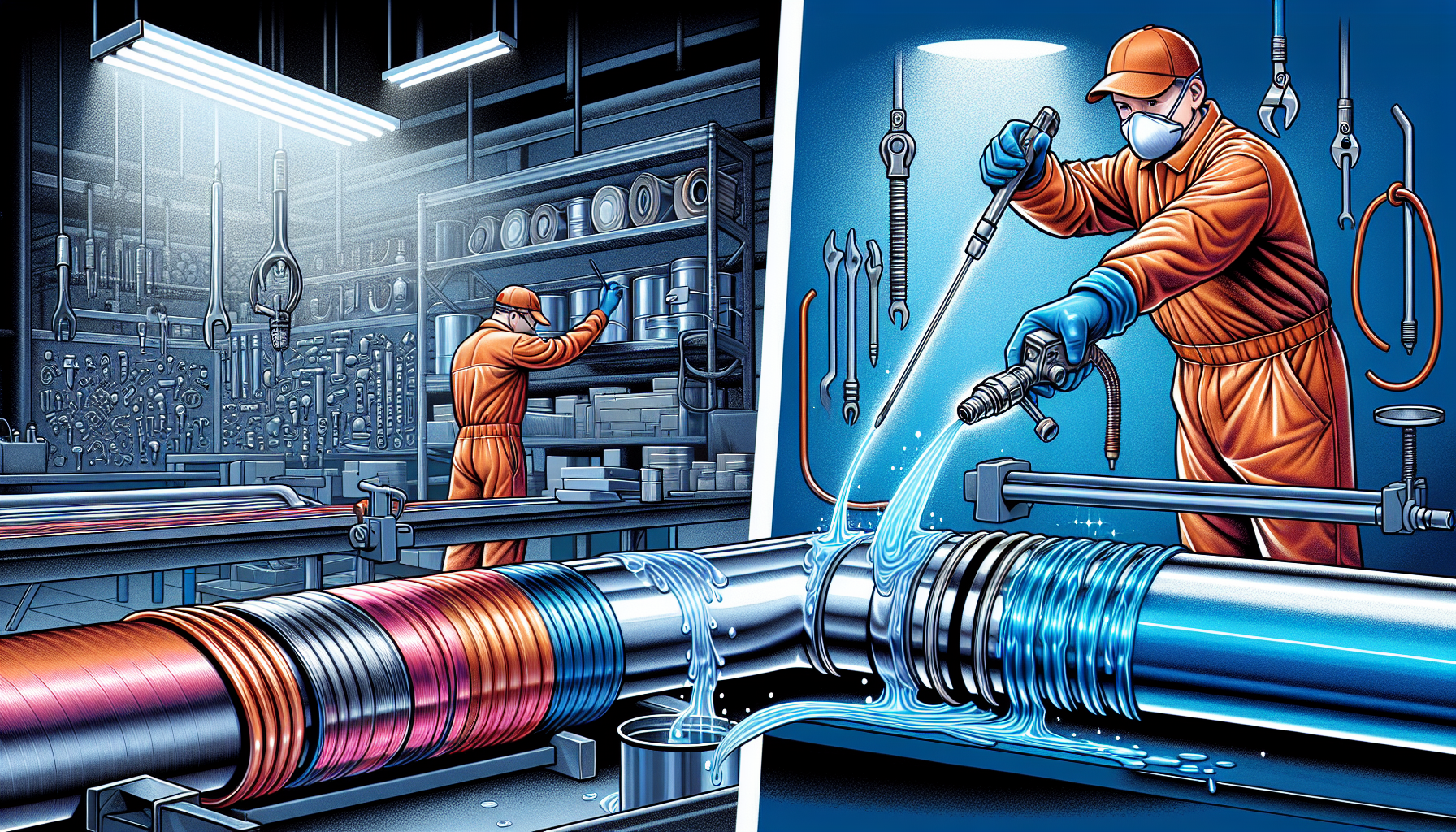
To further enhance their durability, some stainless steel brake lines are coated with polyvinyl fluoride (PVF), which significantly increases their resistance to rust, corrosion, and environmental impacts. This is a key factor in their longevity and reliability, even under harsh driving conditions.
Quality stainless steel braided brake lines often include a rubber brake line outer coating that acts as a preventive layer against dirt and minor abrasions. To further protect against corrosion and UV rays, these lines are frequently covered with a layer of PVC, safeguarding the wire and inner hose from environmental damage. This multi-layered construction with protective coatings is a testament to the thought and engineering that goes into creating these durable and reliable brake lines.
Installation and Maintenance Insights
Correct installation and maintenance of stainless steel brake lines are vital for their optimal performance and the safety of your vehicle. While it’s possible for individuals with the right tools and confidence to fit braided brake lines to a motorcycle at home, it’s advisable to consult a professional mechanic if you’re uncertain about the installation process.
Braided brake hose kits, also known as braided hose kits, are typically designed to be model-specific, ensuring that they can be fitted without the need for modifications to the motorcycle. However, proper installation of the hydraulic brake hose assembly is just part of the equation. Let’s explore the significance of regular inspection and maintenance.
Installing Your Stainless Steel Brake Lines
When installing stainless steel brake lines, there are several key steps to ensure a smooth and successful process. First, avoid polishing old lines that may have interior corrosion despite appearing uncorroded on the outside. It’s also crucial to prevent the lines from twisting, especially when the caliper is removed, to avoid binding that may lead to line failure.
Using flare nut wrenches can secure the fittings without rounding the nuts off, providing a more reliable installation without leaks. It’s important to follow the exact sequence for tightening brake lines and be cautious not to over-tighten to prevent damage to the fittings.
After installation, a brake bleeder is necessary to properly bleed the brake calipers, ensuring that DOT specifications are met.
Regular Inspection and Care
Regular inspection of your stainless steel brake lines is a critical part of maintaining their performance and safety. Keep an eye out for visible signs of brake line issues, such as corrosion, moisture, and damage, along with dashboard warning lights indicating brake system problems.
A low or spongy brake pedal, the vehicle pulling to one side, or intermittent brake issues can be indicators of worn or damaged brake hoses. Regular inspection for wear should include checking for brittleness, sponginess, and visual signs such as cracks, blisters, or leaking. Special attention should be given to inspecting brake line fittings for leaks due to the extra stress they endure.
If brake lines are damaged or leaking, resulting in reduced brake pedal resistance or a pedal that can be pushed to the floor, they should be replaced immediately to ensure safety.
Compatibility with Upgraded Brake Systems
The compatibility of stainless steel brake lines with upgraded brake systems is one of their key advantages. These lines can handle high temperatures without degrading, making them suitable for racing applications where brake components can get extremely hot.
This makes stainless steel brake lines a versatile upgrade, suitable for a wide range of vehicles and driving conditions. Whether you’re an off-road enthusiast, a performance driver, or simply someone who values optimal braking performance, stainless steel brake lines could be a valuable addition to your vehicle.
Cost-Benefit Analysis: Making the Switch
Despite the clear benefits of stainless steel brake lines, it’s important to also factor in the associated costs. It’s true that rubber brake hoses are affordable upfront and satisfy the braking requirements for most drivers under normal conditions. However, stainless steel brake lines may offer long-term benefits and savings due to their enhanced durability.
To make an informed decision, one must weigh the necessity of upgrading against the functional adequacy of rubber hoses and the potential for cost savings over time. Do the benefits of stainless steel brake lines justify the higher initial investment? Let’s delve further into this cost-benefit analysis.
Initial Costs vs. Longevity
The upfront cost of stainless steel brake lines is typically higher than that of rubber hoses, representing a more significant initial investment. Rubber brake lines provide a less expensive, cost-effective option initially without significantly compromising on quality.
However, when it comes to longevity, stainless steel brake lines generally have a longer lifespan when compared to rubber brake lines. The extended lifespan of stainless steel brake lines can lead to cost savings over time, potentially offsetting the higher initial investment.
Vehicle owners who upgraded to stainless steel brake lines have reported that these lines tend to last significantly longer than standard rubber hoses.
Performance Enhancement vs. Standard Needs
The value of upgrading to stainless steel brake lines may depend largely on your specific needs and driving conditions. Among daily drivers, the consensus is that these lines can make the pedal feel firmer and braking more responsive, but the noticeable difference may depend on individual driving conditions and the state of the current braking system.
In high-performance vehicles that already have a high-quality braking system, like Porsches, drivers did not report a significant improvement after switching to stainless steel brake lines. However, vehicles equipped with these lines can have a better pressure versus torque relationship during braking, which implies that drivers with a focus on performance or off-road conditions might experience more pronounced benefits.
Thus, the overall worth of stainless steel brake lines for the average driver compared to those with performance or off-road vehicles varies based on existing system quality and individual driving needs.
Resale Value and Insurance Considerations
Beyond performance and longevity, upgrading to stainless steel brake lines may also have an impact on your vehicle’s resale value and insurance premiums. Installing these brake lines may increase a vehicle’s resale value by enhancing its perceived value and appeal to certain buyers.
On the other hand, modifications like upgraded brake lines can affect car insurance premiums, and it’s important to inform the insurance company of such changes. Therefore, when considering the switch to stainless steel brake lines, it’s worth factoring in these potential financial implications.
Real User Experiences with Stainless Steel Brake Lines
To accurately measure the impact of stainless steel brake lines, let’s look at the real-world experiences of those who have adopted them. User experiences with these brake lines vary, with some drivers reporting significant improvements in pedal feel and braking performance, while others notice minimal differences.
Among many drivers, there’s an acknowledgment that stainless steel brake lines can offer a more solid pedal feel allowing for improved modulation during braking. A Land Rover Discovery owner noted that after installing DOT-approved stainless steel brake lines, there was a clear enhancement in pedal firmness which benefited towing situations. What about the experiences of different types of vehicles and drivers? Let’s explore these scenarios.
From Street Cars to Off-Roaders
Stainless steel brake lines, also known as ss lines or stainless lines, are not just for high-performance vehicles. They have been successfully installed on a wide range of vehicles, from modern street cars to rugged off-roaders.
Replacing aging oem lines with stainless steel brake lines often leads to notable improvements in brake performance and pedal feel. The experiences of drivers who have upgraded to stainless steel brake lines reflect the broad applicability and enhanced braking capabilities across different types of vehicles.
Performance Drivers’ Feedback
Performance drivers often have unique needs and expectations from their vehicles, and their feedback on stainless steel brake lines is enlightening. A performance driver with a Celica experienced a significantly firmer pedal feel at the end of the stroke after installing these lines, which was particularly apparent during heavy braking on a racetrack.
However, it’s worth noting that while cup cars often use factory brake lines, indicating a possible minimal return on investment for some high-performance applications, the firmer pedal feel provided by stainless steel lines is a distinct advantage for certain driving conditions.
Everyday Driving Impressions
For everyday drivers, the experience of upgrading to stainless steel brake lines can also be transformative. Many drivers have reported that these lines improved the responsiveness of their brakes, allowing for a more immediate reaction when engaging the pedal.
Upgrading to stainless steel brake lines has enhanced the driving experience by providing a firmer pedal feel and increased confidence during routine stops. However, a minority of everyday drivers may not notice a difference in brake feel or overall driving experience in regular driving conditions after this upgrade.
Summary
As we’ve explored in this comprehensive guide, stainless steel brake lines offer enhanced durability, heat resistance, and improved pedal feel, making them a popular upgrade for performance and off-road drivers. From their intricate construction to the noticeable difference in pedal feel, the benefits of upgrading to stainless steel brake lines are clear.
However, the decision to make the switch should consider factors such as initial costs, longevity, performance needs, and potential impacts on insurance premiums and resale value. While stainless steel brake lines may not be for everyone, for those seeking enhanced braking performance and a firmer pedal feel, they present a compelling option.
Frequently Asked Questions
What are the disadvantages of stainless steel brake lines?
Stainless steel brake lines have the disadvantage of allowing small dust and dirt particles to get between the braiding and the hydraulic line, causing wear and potential leaks over time.
Is it worth upgrading to stainless steel brake lines?
Yes, it is worth upgrading to stainless steel brake lines, as they are resistant to physical damage and less likely to puncture, especially if you plan to take your vehicle off-road.
What’s the best material for brake lines?
The best material for brake lines is copper nickel, which offers improved flexibility and durability, making it a preferred choice for OEMs and maintenance facilities.
Can I install stainless steel brake lines myself?
Yes, you can install stainless steel brake lines yourself if you have the proper tools and confidence, but it’s recommended to seek professional help if you’re unsure.
How do stainless steel brake lines improve pedal feel?
Stainless steel brake lines improve pedal feel by ensuring a more direct transfer of hydraulic pressure, resulting in better pedal feel and more consistent braking.


